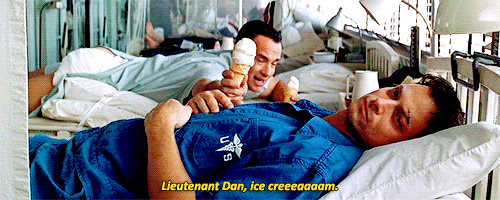In Left-Right-Center theory the films dictated to be on the “right” end of the spectrum are films based in nostalgia, a celebration of the “better times,” and maintaining the status quo. On the Best Motion Picture list, one film that comes to mind that fits the description of a “right” spectrum film is that of Forrest Gump. In 1994 director Robert Zemeckis introduced the world to the slow-witted and loving protagonist that is Forrest Gump, a southern raised boy who through many wacky antics fights in a war, goes to college, reunites with an old flame, opens a business, and influences millions. At first glance, the concept of Forrest Gump speaks to that of a “left” or possibly “center” spectrum film with its comedic commentary on the Vietnam war, the treatment of veterans postwar, as well as its inclusion of many civil rights issues that would be prominent in the 1960s and 70s when the latter portion of the film takes place. Contrary to popular belief it will come to attention that the film is one with the “right” spectrum with a key piece of information coming in terms with the negative symbolism associated with modern issues and the usage of a flashback to view a better time in Forrest’s life.
 On May 6th, 1994 America was shocked as its Democrat president William “Bill” Clinton, the man who was president for one year was accused of sexual assault while serving as governor of Arkansas. This shook the American political situation, giving Republicans a piece of ammunition to use against their political opposition. Two months after the accusation on July 6th, Forrest Gump debuted to the American public, a movie speaking of the “good old days” the era of Richard Nixon, the concept of playing football in college, fighting for your nation, and pursuing the American Dream. These key points are areas of opposition to the opposing forces of the film, even the woman Forrest Gump fancies, Jenny, takes up arms in protest of the Vietnam war. The character is later shown to have died while characters like Forrest who embody these concepts held dear by the base status quo of the United States seemingly live a positive life. The audience sees Forrest embodied these concepts when he gets a scholarship to go to college via playing football, he fights in Vietnam and returns home with honors after he gets injured, this is opposed by Jenny’s life where she struggles as she opposes the base status quo.
On May 6th, 1994 America was shocked as its Democrat president William “Bill” Clinton, the man who was president for one year was accused of sexual assault while serving as governor of Arkansas. This shook the American political situation, giving Republicans a piece of ammunition to use against their political opposition. Two months after the accusation on July 6th, Forrest Gump debuted to the American public, a movie speaking of the “good old days” the era of Richard Nixon, the concept of playing football in college, fighting for your nation, and pursuing the American Dream. These key points are areas of opposition to the opposing forces of the film, even the woman Forrest Gump fancies, Jenny, takes up arms in protest of the Vietnam war. The character is later shown to have died while characters like Forrest who embody these concepts held dear by the base status quo of the United States seemingly live a positive life. The audience sees Forrest embodied these concepts when he gets a scholarship to go to college via playing football, he fights in Vietnam and returns home with honors after he gets injured, this is opposed by Jenny’s life where she struggles as she opposes the base status quo.
In terms of a flashback and many forms of media, a flashback is an instance where one character in the present is recalling and reciting events from a previous time that may or may not be previously known to the audience. In the film, Tom Hank’s character, the titular Forrest Gump, is seen in numerous scenes recounting stories from his life as he waits on a park bench in a white suit with a box of chocolates. These flashbacks can be interpreted as the audience as Forrest recounting the better times he had in his life. It is clear Forrest fondly remembers these moments and feels longingly to return to many of them via his recounting of them to numerous strangers. In the latter half of the film, Forrest Gump is seen opening his shrimping business that him and Benjamin Buford “Bubba” Blue, an African-American soldier he fought alongside within Vietnam, Forrest valued his time with his friend and would recount that point in his life that he would desire to revisit.
While Forrest Gump is tossed back and forth between the three spectrums, it stands true that key concepts of the film are maintaining the status quo of the sociopolitical agenda of 1994 as well as the concept of nostalgically looking back upon an age past with desires to revisit those times, two defining features of the “right” spectrum of film. Tom Hanks claims that the film holds no political stance, it is clear the film was made for one purpose to uphold a status quo of a more “right” spectrum society.

No comments:
Post a Comment